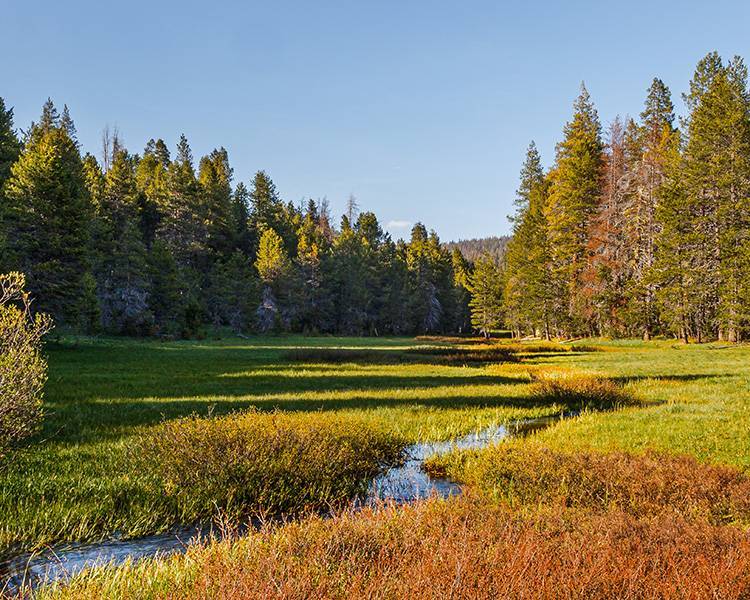McGurk Meadow, Yosemite NP was named after John (aka Jack) McGurk. He was a seasonal cattleman living in this area in the late 19th century. Although named after him, he never owned the meadow and was, in fact, evicted! For a full explanation, see the story below the photograph.
The meadow can be found on Glacier Point Road, about 7.5 miles (12 km) from Highway 41. Helpfully, it is signposted on the left. Here you can find the trailhead and follow a simple 1.8-mile (2.9 km) round trip over a flat trail. The track leads through woods to a wildflower meadow (exploding with lupine, lilies, marigold, yarrow, daisies, etc.). A picturesque brook runs through the meadow leading to an old log cabin.

McGurk Meadow, Yosemite National Park: How it Came by its Name
John McGurk was born on May 1, 1856, on the right bank of San Antonio Creek, Calavera County, California. In 1868 he ran away from home to work as a farmhand and cowboy, eventually becoming a “hog-man”. For several years he raised hogs (and mayhem!) in Fresno Flats (Oakdale). Subsequently, he graduated to raise cattle.
In 1895 he purchased the meadow from Hugh Davanay, presumably to graze cattle. However, two years later U.S. troops took over the land and expelled him.
Seemingly, a certain Mr. Thomas M. Again wrongly described the meadowland when he filed for 160 acres for a homestead. Apparently, the land Again filed was on Illilouette Creek, one township to the east. Evidently, the Illilouette land was worthless. Presumably not knowing his mistake, Again sold the land to Davanay, who in turn sold it to McGurk. The latter finding himself without ownership forced Davanay to reimburse him, even though Davanay was not able to get the Land Office to trade titles. He was, therefore, unable to sell the Illilouette land. The result was that the land called McGurk Meadow never belonged to him in the first place. In fact, it never left public ownership!
Located on the edge of McGurk Meadow is a log cabin, which McGurk used. The log cabin is a one-room structure, about 14 feet (4.3 m) square, with saddle-notched peeled lodgepole pine logs. The cabin was stabilized in 1958 by Sierra Club volunteers. It is one of the few structures left in the park that remain from the pre-park era.
Following McGurk’s Eviction:
In 1896 McGurk moved to Nipinnawassee in Madera County, where he got married and settled down.
He served as a deputy sheriff under Sheriffs J. F. Clarke and J. J. Mullery of Mariposa County and John Barnett of Madera County. He earned the title of “Captain” when he commanded the Antirustler Company. Later, he became the Honorary Grand Marshal of an Old Timers Day Parade. The ribbon he received for this honor is on show in the Yosemite Museum. Additionally, the museum displays several other items of McGurk’s, including a pair of leather leggings, a deputy’s badge, boots, and his Smith and Wesson .44 caliber pistol.
Although he only lived in Yosemite for a couple of years, his legacy certainly lives on.
(Captain John J. McGurk, Lloyd W. Brubaker, Ranger-Naturalist, in Yosemite Nature Notes, April 1858)